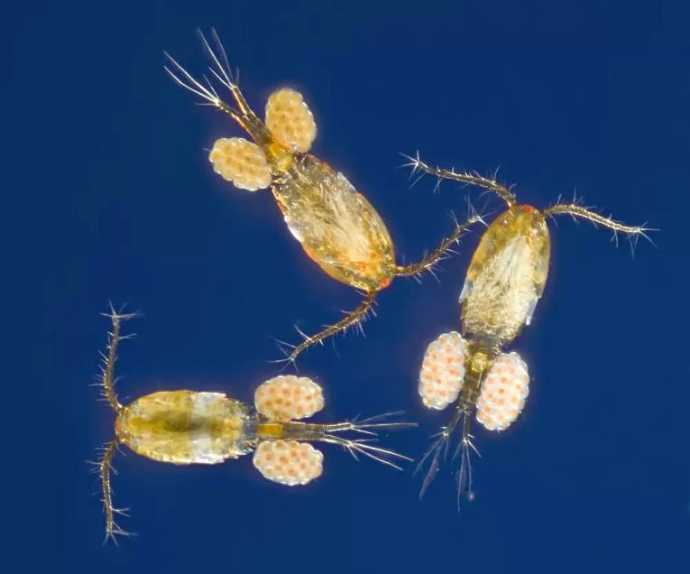Credit: © Shutterstock
Phytoplankton are of supreme importance. Without them zooplankton, fish and many other species could not survive. As the studies of acidification progress, the knowledge that eutrophication should be increasing photosynthetic activity in the oceans balances the idea of an increased uptake of CO2 by the additional mass of phytoplankton. The original human-induced acidification, however, causes other problems. The basification caused by leaked fertilizers begins at a lower pH and the varied plants in the phytoplankton respond differently. The succession of plants in the sea is the same as plant succession on land, so we can expect important aspects of cycling and fishery management to be vitally affected.
OA is yet another abbreviation we have to describe pollution, this time for ocean acidification. We have to remember that another effect of anthropogenic change is ocean warming, so maybe we should call that OW! Disregarding that, impacts of OA are a surprising use of the carbon dioxide to create blooms on continental shelves where farmers have released large amounts of fertilizers. Increase in pH is the result, totally antagonistic to the original larger scale OA. On the other hand, organic eutrophication (without fertilizers) does tend to cause an increase in respiration, increasing the carbon dioxide concentration and lowering the pH again. Decay of the bloom also encourages massive respiration by the bacteria, which will be familiar to river biologists who study sewage (also removing the river’s oxygen.)
Variation is therefore possible in the coastal ecology where high nutrient loads are incoming, compared with the vast worldwide mass of low-nutrient ocean. Kevin J Flynn and many colleagues from Swansea University,UK, Plymouth Marine Lab. and the Marine Biological Association there, and the University of Maryland, US present their paper, entitled Ocean acidification with (de)eutrophication will alter future phytoplankton growth and succession
in the Proc. Roy. Soc. B today.
The selection of certain species in the phytoplankton to grow in increased pH zones around coasts will cause blooms, with the micro-zooplankton also sensitive to this basification. The lower starting point in pH for bloom-induced basification can be expected to cause novel impacts on predator/prey relationships. The predator copepods (tiny crustaceans such as the familiar Cyclops) involved are sensitive to low pH, so they may adjust less well to the new conditions, leaving fish and others heavily affected. The emphasis of this paper is to point out the great impact this could have on global productivity and marine ecosystem services.
The species of interest here were a weakly calcifying strain of the non-motile Emiliania, the motile Rhodomonas and a diatom called Thalassiosira(diatoms are silicifying, as their case is made of silica.)All three species were subjected to low-nitrogen conditions in culture. Present day-seawater has a mean pH of 8.2 while the expected OA will set it around 7.6. Dense algal blooms reach a high of pH8.8. These levels were investigated to provide a glimpse of the future for these 3 plants.
As they grew, pH changed, according to the growth of the phytoplankton species, with the drift in pH noted. Only the motile alga showed little effect in growth under these conditions. Both of the other species halved their growth under a pH of 8.8, but showed similar or slightly-enhanced growth at pH 7.6. Nutrient stress affected the three species in different ways.
The North Sea has changed historically to a current quite eutrophic condition, like many American or Asian coastal areas, or any regions near extensive human populations. The potential is for an increase in total bloom sizes, with effective grazing by zooplankton reduced. The blooms may be more affected by nutrient, pH and light availability. As OA makes the hydrogen ion concentration more variable, the interplay between producers and consumers will be changed. Those who adapt to low pH will be then hit with bloom-induced basification (high pH.) growth will certainly be affected, but even the phytoplankton chosen here illustrate great variation in their abilities to cope. With many more primary and secondary producers, consumers and even top predators to be involved, any ecosystem would be unstable and every marine habitat studied could produce completely different results.
Distantly-related but locally-valid material can be found here with a description of recent changes in the macro-fauna in the North Sea area, following decreases in zooplankton availability.










